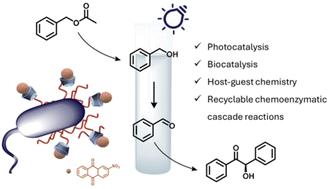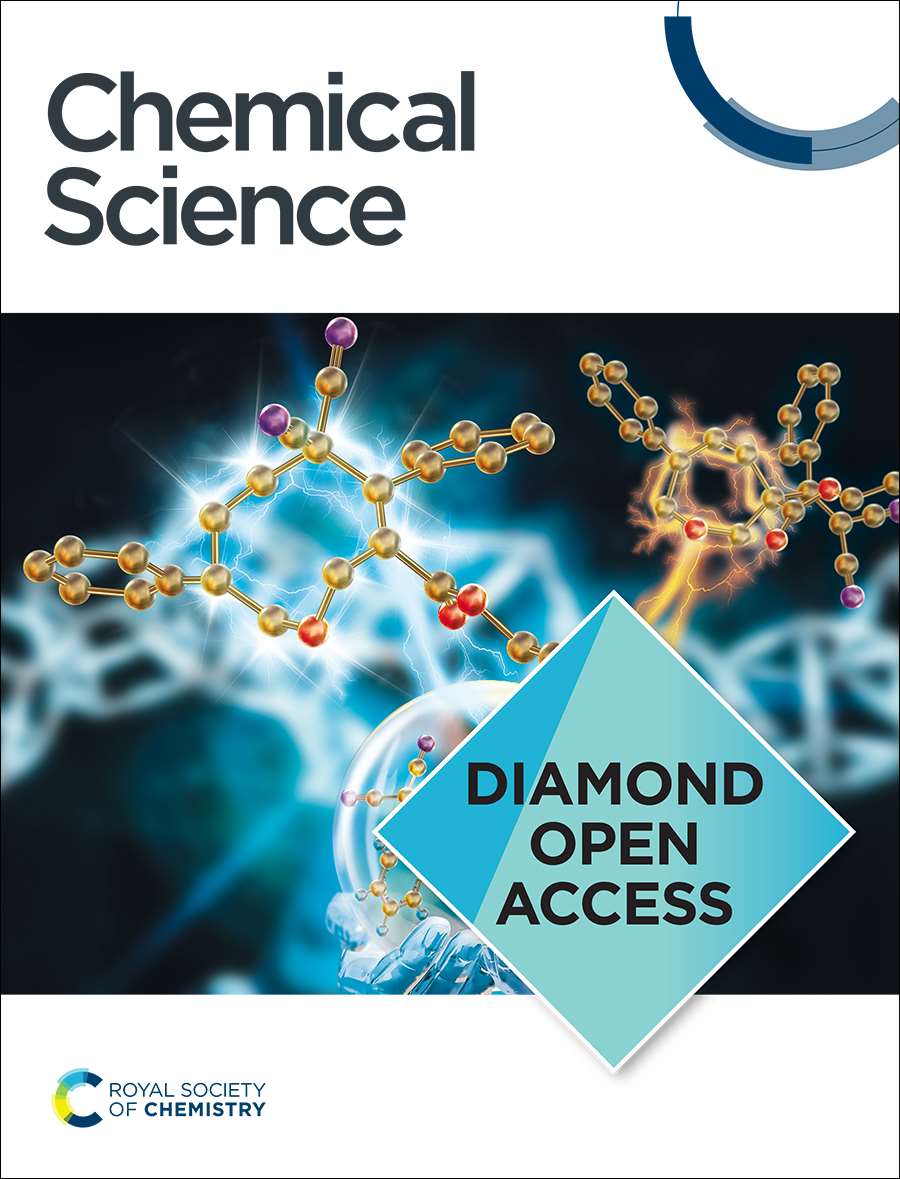Host–guest chemistry on living cells enabling recyclable photobiocatalytic cascade
IF 7.6
1区 化学
Q1 CHEMISTRY, MULTIDISCIPLINARY
引用次数: 0
Abstract
Combining chemical and whole-cell catalysts enables sustainable chemoenzymatic cascade reactions. However, their traditional combination faces challenges in catalyst recycling and maintaining cell viability. Here, we introduce a supramolecular host–guest strategy that efficiently attaches photocatalysts to bacterial cells, facilitating recyclable photobiocatalysis. This method involves attaching a cationic polyethylenimine (PEI) polymer, functionalized with β-cyclodextrin (β-CD), to E. coli cells. The polymer attachment is biocompatible and protective, safeguarding the cells from harsh conditions such as UV radiation and organic solvents, without causing cell death. Additionally, the presence of β-CD imparts a plug-and-play capability to the cells, enabling the straightforward integration of guest photocatalysts – specifically anthraquinone – onto the cell surface through host–guest interactions. This effective combination of cellular and chemical catalysts promotes efficient photobiocatalytic cascades and supports the photocatalyst's recycling and reuse. This supramolecular system thus represents a promising platform for advancing photobiocatalysis in cascade synthesis.

求助全文
约1分钟内获得全文
求助全文
来源期刊

Chemical Science
CHEMISTRY, MULTIDISCIPLINARY-
CiteScore
14.40
自引率
4.80%
发文量
1352
审稿时长
2.1 months
期刊介绍:
Chemical Science is a journal that encompasses various disciplines within the chemical sciences. Its scope includes publishing ground-breaking research with significant implications for its respective field, as well as appealing to a wider audience in related areas. To be considered for publication, articles must showcase innovative and original advances in their field of study and be presented in a manner that is understandable to scientists from diverse backgrounds. However, the journal generally does not publish highly specialized research.
 求助内容:
求助内容: 应助结果提醒方式:
应助结果提醒方式:


